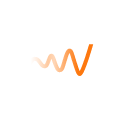Treatment guide
Rhinoplasty Abroad: Surgery and Recovery Overview, Cost [Before and After Photos]

Аrticle author
Anna Leonova

Medically reviewed by
Fahad Mawlood
Updated: 30.08.2021
Minutes to read: 17 minutes
Rhinoplasty (also referred to as a nose job or a nose reshaping) is a plastic surgery procedure to correct the nose shape due to congenital and acquired defects or just in order to improve facial symmetry.
According to the American Society of Plastic Surgeons (ASPS) statistics, rhinoplasty is the no.1 cosmetic surgical operation in the USA. About 820,000 people experience this procedure each year. And this number is tending to increase year by year. It is easy to explain such popularity: after surgery, people start feeling confident and attractive, they solve their problems with breathing, and at least become much happier.
However, it is often challenging to pick a proper rhinoplasty clinic offering a great result at a reasonable price. So, keep reading to find out all the procedure and recovery process features, where it is better to have a nose job, and how much it will cost you.
Short Details
WHO IS A CANDIDATE?
- A person who wants to improve a nose shape or its tip
- A person who has breathing disorders because of deviated septum
- A person who has reached the age of 18 y.o.
HOSPITAL STAY
- A procedure usually takes 1.5-3 hours
- A patient should stay in the hospital for several hours or overnight.
RECOVERY DURATION
- It is possible to return to work and daily routine in 1 week
- Visible swelling and bruising fade within 1-2 weeks
- It is possible to return to sports activities in 6-8 weeks, depending on a case
- A person can observe the outcome in about a year.
SUCCESS RATE
The success of the outcome significantly depends on the doctors’ skills, quality of the nose tissues, cartilage, and bones, and how the healing process goes.POSSIBLE RISKS AND SIDE EFFECTS
- Nasal bleeding
- Swelling
- Infection
- Partial loss of sensation
- Breathing difficulties
- Errors that must be corrected during revision rhinoplasty
ALTERNATIVE TREATMENTS
Reasons for Rhinoplasty
Two primary motivations force people to undergo rhinoplasty overseas:
- esthetic one to improve the nose shape and facial asymmetry
- medical one to correct nasal obstruction and restore breathing.
Sometimes, people have both reasons to correct the nose shape. For instance, a person with a crooked nose has a deviated nasal septum. In this case, a patient wants to solve both issues: to normalize breathing and improve esthetic appearance of the nose.
However, esthetic purpose is the most frequent reason to perform a nose job. Inappropriate nose shape often causes a person’s discomfort, lack of confidence, complexes, and even depression. Any of these reasons is more than enough to perform rhinoplasty.
Depending on a case, a surgeon can manage a nose job correcting:
- the nose size
- nasal angles
- the bridge
- the tip
- nostrils.
Each case is unique, and it is essential to discuss the surgery only with a plastic surgeon personally. Often, people who aim to have rhinoplasty “order” the nose showing the photos of celebrities. However, it does not mean that the same shape will be proper for you. The choice of a nose shape is more complicated: a plastic surgeon must assess a patient’s appearance features and model the nose preserving facial symmetry.
If you are an owner of thick skin, search for a surgeon who has dealt with such cases. Because it is more difficult to operate thick skin and requires advanced experience of a plastic surgeon.
Common Nose Shapes for Rhinoplasty
The asymmetrical nose shape can be congenital or changed by trauma or some surgeries. The defect may capture the whole nose or only its tip. Below you can find the most common nose shapes for rhinoplasty. Maybe, you will recognize yours.
 Aquiline Nose
Aquiline Nose
Patients with such a nose shape have a bump on the bridge. The size and shape of this bump can differ. Often, people are not satisfied with how they look sideways. And it is quite a frequent occasion when people with an aquiline nose do rhinoplasty. However, having such a nose does not always mean an esthetic defect. In such cases, when facial symmetry is preserved, this nose shape looks well and does not require correction. Asymmetrical or Crooked Nose
Asymmetrical or Crooked Nose
Such a nose shape can be hereditary. But in most cases, the changes are the result of trauma. A crooked nose causes facial asymmetry and disproportion, so a person feels esthetic discomfort. Moreover, people with such a nose shape can experience breathing disorders, stuffiness in the nose, and even headaches.
Long Nose
A nose can be considered a long one if it exceeds the harmonious sizes: the nose must take no more than the third part of the longevity and width of the face. Pinched Nose
Pinched Nose
The feature of such a type of the nose is a pinched tip on each side. This nose shape is rarely congenital. Usually, a pinched nose is a result of previous operations performed wrong. Because of the weakened cartilage, a tip cannot hold the nose shape properly. So it seems that a person always pinches the nose.
People with a pinched nose experience esthetic discomfort, breathing, and protective functions disorder.
 Bulbous Nose
Bulbous Nose
People with a heavy and huge nose tip are also typical candidates for rhinoplasty. Bulbous nose shape is hereditary and most common among citizens of Eastern Europe. Such a nose shape makes a face rugged, so a person feels unattractive and unconfident.
 Saddle Nose
Saddle Nose
The features of the saddle nose are a collapsed nasal bridge, while a nose tip visually rises over the bridge. The defect is often caused by injury or some diseases. The degree of the bridge collapse varies significantly, so rhinoplasty complexity will also differ.
Candidates for Rhinoplasty
Only a doctor can decide whether you are a good candidate for rhinoplasty. However, It is recommended not to perform a nose job for patients younger than 18 years old. Only in some cases and with medical purposes exceptionally, a doctor can allow an operation earlier.
Usually, rhinoplasty is performed for patients who have reached 20 years old. Until this age, the bone tissues of the nose and cartilage have been completely shaped.
The best age to experience rhinoplasty is 20-35 years.
Types of Rhinoplasty
The choice of rhinoplasty type depends on what problems a patient wants to solve — esthetic, medical, or both.
Below we will consider the most common rhinoplasty types.
Closed rhinoplasty
During a closed rhinoplasty, a doctor makes several incisions depending on the intervention complexity inside the nose. A surgeon separates nose skin, bone, and cartilage that form a nose structure. After that, a plastic surgeon can easily change their shape, remove excess cartilage or bone, and increase the volume. For instance, a surgeon can remove the part of bridge cartilage to narrow the nose.
When is it indicated?
- narrow or wide nostrils
- inappropriate tip size
- increase or decrease the tissue volume.
Nose shapes to correct:
- aquiline nose
- pinched nose
- bulbous nose
- long nose.
Open rhinoplasty
Doctors perform open rhinoplasty for patients who need more complex interventions or in case of repeated reconstructive surgeries. Within open rhinoplasty, plastic surgeons make incisions in the area of the nasal cavity and columella area (a vertical bridge that separates nostrils).
A surgeon cuts soft tissues, and then manages an operation on the nasal cartilage and bones.
- narrow or wide nostrils
- inappropriate tip size
- increase or decrease the tissue volume.
- aquiline nose
- pinched nose
- bulbous nose
- long nose
- crooked nose
- saddle nose.
Open vs. Closed Rhinoplasty
| Open | Closed |
|---|---|
| Performed outside the nose through the external incision of the columella | Performed inside the nose through the incisions within the nostrils |
| Better visibility and access during surgery | Limited visibility and access during surgery |
| Corrects severe defects of the nose | Minor correction of the nose and tip |
| A small, almost invisible scar on the columella may remain | No scars |
Secondary rhinoplasty
Secondary, or revision rhinoplasty, is carried to correct defects that have been left after the first intervention. These defects can be easily corrected or require complex repeated surgery. Doctors perform secondary rhinoplasty in an open or closed way, depending on the case.
Secondary rhinoplasty is always more expensive than a primary one. It requires advanced skills from a doctor. Not every plastic surgeon can manage this surgery properly and correct defects occurred during previous intervention.
- narrow or wide nostrils
- inappropriate tip size
- increase or decrease the tissue volume.
- aquiline nose
- pinched nose
- bulbous nose
- long nose
- saddle nose.
Non-surgical rhinoplasty
Non-surgical, or liquid rhinoplasty, cannot be an alternative to traditional rhinoplasty. It can correct only slight defects. Only 5-7% of all patients who want to undergo rhinoplasty can be candidates for a non-surgical procedure. During liquid rhinoplasty, a doctor administers fillers to correct the nose shape slightly. The whole process takes 15-45 minutes; no recovery is required. The effect preserves for about 9-24 months.
- to increase or decrease the tissue volume.
- to “try on” a new nose without surgical intervention and decide whether traditional rhinoplasty is necessary
- aquiline nose
- pinched nose.
Rhinoplasty vs. Other Cosmetic Operations
A nose reshaping allows achieving significant improvement of a patient’s appearance. However, this is not always enough to obtain a perfect facial symmetry. Sometimes, it requires some additional cosmetic procedures to get the desired result. Among them:
- eyelid lift
- brow lift
- chin reshaping.
Doctors sometimes recommend performing the above-mentioned procedures simultaneously with a nose job. The multiple intervention allows a complete face balance; a patient will not waste time for one more operation and recovery.
It is necessary to see plastic surgeons for discussing whether it makes sense to carry out several operations at once.
Nose Job Procedure: How to Prepare and What to Expect
Preparation for nose surgery
The first thing you need to do is to pick a clinic and a plastic surgeon for a rhino operation abroad. After that, you will have a consultation with your doctor personally or online. You need to provide a specialist with medical exams. Then, discuss your expectations from plastic surgery, what a nose shape you will receive afterward. A plastic surgeon will give recommendations on how preparing for the surgery and what activities you should avoid.
A plastic surgeon will create a 3D model of the nose to guide a patient regarding the future result. A 3D model can slightly be different from the real outcome.
You schedule the most convenient date of your nose job and arrive at the clinic. Then you will undergo a medical investigation before the intervention to check your health condition, have consultation with an anesthesiologist.
How You Prepare
Pick a clinic
Prepare photos of your nose from all sides
Prepare your medical history
Have a consultation with a doctor
Discuss your expectations and outcome.
Schedule the date of your surgery.
Also, at least one week before nose reshaping, you should:
- avoid drinking alcohol
- stop smoking
- not to take aspirin and antibiotics
- avoid sunbathing.
A violation of these rules can complicate your healing process.
Nose Job Abroad Process
Anesthesia A patient requires anesthesia or sedation to perform nose reshaping. You need to discuss with your doctor what type of anesthesia is adequate for you: local or general one. A patient tolerates a modern anesthesia well: it is safe, brings fast and soft effect Incisions Depending on a nose reshaping type, closed or open one, a plastic surgeon makes an incision inside the nasal cavity or outside the nose across the columella. A doctor receives access to the nasal structure through the incisions and extremely carefully raises the skin covering bones and cartilage. Correction A doctor removes some parts of bone and cartilage to reduce the nose size. In some cases, it is necessary to increase the volume of some bone structureы. In this case, a plastic surgeon uses cartilage of the septum, ear, or rib for this purpose. Within the rhinoplasty for medical purposes, a specialist corrects the deviated septum restoring a patient’s breathing. Suturing When reshaping and correction is over, a doctor places back the skin and tissues, then stitches the incisions. After a procedure, you will be in the recovery room to monitor your health for several hours. If necessary, you will stay there overnight.Recovery
Recovery after nose reshaping usually goes well, without many complications. However, it would be great if you have the opportunity to take someone with you. A person will support you during the initial stage of the recovery when you can feel unwell or weak. The healing process day by day:
Just after an operation, you should stay in bed and get rest: your head must be higher than your shoulder to manage swelling and bleeding faster. You can leave the hospital in several hours after nose reshaping, but also can stay overnight.
You should rest; avoid stress and activities. Let your body accumulate efforts for recovery. Bruising and swelling typically occur on the 3rd day. You can put a cold compress to reduce these unpleasant manifestations. A patient does not feel any pain usually, but can feel weakness, and breathing difficulties. It is also necessary to gently clean the nose; you must visit a clinic to do this procedure.
A patient feels some relief and starts slowly returning back to the daily routine. A doctor removes the bandage on the 7th day. So be prepared to take at least 7 days off. Noticeable swelling and bruises also reduce.
Bruises and swelling becomes almost invisible in 2-3 weeks after surgery, so a patient can go back to a social activity. A doctor removes eternal stitches in 3-4 weeks; external stitches dissolve themselves due to special materials. It is possible to resume sports activities in 4-6 weeks after intervention. Note that the first 6 weeks, you may experience something like a runny nose.
Swelling continues disappearing. You can observe the dynamics of your nose shape removal. Breathing completely bounces back. You can estimate the final outcome in a year.
Postoperative Instructions
To boost and to relieve your healing process, follow these simple rules:
- Wear clothes with a wide neck hole not to reach your nose.
- First 2 weeks, it can be uncomfortable to wash hair. Let someone help you.
- Take some paper napkins with you — you may need them for the first several weeks to sponge your nose if there are any discharges. But don't press too much.
- When we still have many restrictions and wear the mask, make sure it doesn't hurt or put pressure on your nose.
- Avoid wearing make-up for several weeks — as your skin on the nose and nearby is very sensitive.
- As you should sleep on your back and some tend to sleep in other positions, make sure you won't be hurt during your sleep. You may take pillows and put them on both sides of your head to create a protective barrier.
- Be attentive in public places. People often make sudden movements and stops. So be cautious so you can avoid any shaking, abruption, etc.
- The first weeks can be challenging but proceed to eat properly if you feel no hunter and try to move — even short distances. Your body and brain need to get energy and power from healthy food and signal that you are ready to recover.
- Use nasal saltwater washes to clear the nasal passages — it also helps to breathe more easily.
- Try to sneeze carefully with an open mouth.
- If you need to have a PCR test before traveling, inform the medical worker of your operation not to damage your nose.
- Listen to your body when you return to your daily life and physical activities. Don't be afraid and too worrisome but monitor your feelings and blood pressure.
It seems complicated to go through all recovery steps. It is true that you will experience some discomfort for several weeks and need to limit the everyday activities. But you should remember: just in 1-2 months you will see a perfect reflection in the mirror, become confident, and attractive. Recovery takes just several months, but your new appearance will make you happy for the rest of your life.
How you prepare
Your medical history. The most important question your doctor will ask you is about your motivation for surgery and your goals. Your doctor will also ask questions about your medical history — including a history of nasal obstruction, surgeries and any medications you take. If you have a bleeding disorder, such as hemophilia, you may not be a candidate for rhinoplasty.
A physical exam. Your doctor will conduct a complete physical examination, including any laboratory tests, such as blood tests. He or she also will examine your facial features and the inside and outside of your nose.
The physical exam helps your doctor determine what changes need to be made and how your physical features, such as the thickness of your skin or the strength of the cartilage at the end of your nose, may affect your results. The physical exam is also critical for determining the impact of rhinoplasty on your breathing.
Photographs. Someone from your doctor’s office will take photographs of your nose from different angles. Your surgeon may use computer software to manipulate the photos to show you what kinds of results are possible. Your doctor will use these photos for before-and-after assessments, reference during surgery and long-term reviews. Most importantly, the photos permit a specific discussion about the goals of surgery.
A discussion of your expectations. You and your doctor should talk about your motivations and expectations. He or she will explain what rhinoplasty can and can’t do for you and what your results might be. It’s normal to feel a little self-conscious discussing your appearance, but it’s very important that you’re open with your surgeon about your desires and goals for surgery.
If you have a small chin, your surgeon may speak with you about performing
a surgery to augment your chin. This is because a small chin will create the illusion of a larger nose. It’s not required to have chin surgery in those circumstances, but it may better balance the facial profile.
Food and medications
Photographs. Someone from your doctor’s office will take photographs of your nose from different angles. Your surgeon may use computer software to manipulate the photos to show you what kinds of results are possible. Your doctor will use these photos for before-and-after assessments, reference during surgery and long-term reviews. Most importantly, the photos permit a specific discussion about the goals of surgery.
If you smoke, stop smoking. Smoking slows the healing process after surgery and may make you more likely to get an infection.
Risks and Complications
A nose job is considered a pretty complex procedure due to involving both soft and bone tissues. So, before having this intervention, a doctor must warn about possible complications. After summing up all pros and cons, you can decide whether nose reshaping is worth performing.
So, you may face such complications and risks after surgery:
Bleeding
Infection
Difficulties with anesthesia tolerating
Partial loss of skin sensation
Changes in skin color
Breathing disorder
Possibility of revision surgery.
Usually, the above-listed complications are rare and temporary. To minimize possible risks and complications, it is essential to entrust your appearance to a board-certified rhinoplasty surgeon.
Rhinoplasty Before and After Pictures
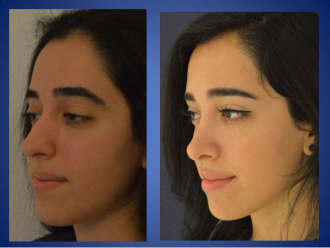

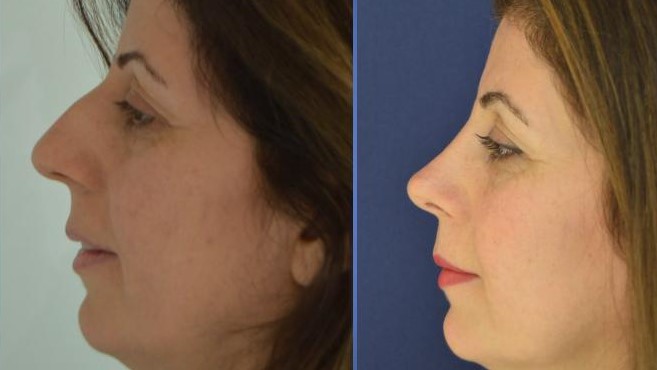

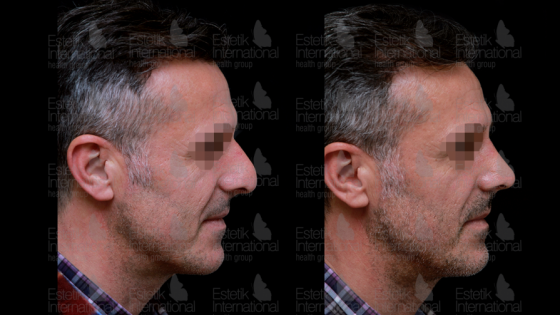

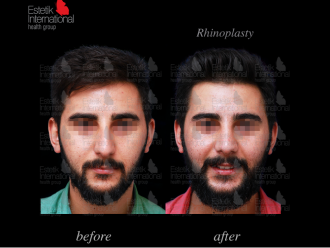
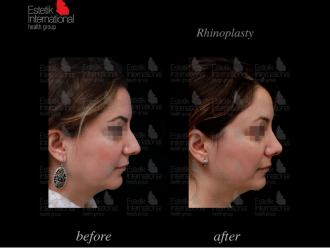
Is Rhinoplasty Abroad Worth It?
Patients often wonder whether they should get rhinoplasty. Obviously, only a plastic surgeon can definitely answer if nose surgery is indicated for you. However, if every time you look in the mirror, you feel confused about your nose shape, it is time to see a rhinoplasty doctor. It also concerns those cases when a person feels any difficulty breathing.
Generally, rhinoplasty is worth it in 90% of cases. If you have some doubts or want to find out more about people who have already undergone surgery, check nose job reviews.
Rhinoplasty Surgery: At Home or Abroad?
Nowadays, many patients prefer having rhinoplasty abroad for several reasons:
-
2-5 cheaper procedures. For instance, nose reshaping costs about $6,500 in the USA and $2,000 in Turkey.
-
Access to the best plastic surgeons. Sometimes, it can be challenging to find an experienced rhinoplasty doctor in the country of residence. And having rhinoplasty abroad is the only way to perform an operation properly.
-
Higher level of comfort. Usually, plastic surgery clinics that serve international patients provide comfortable conditions of stay, transfer, and language assistance.
You can also experience rhinoplasty in your country if your health insurance covers all expenses, or prices for an operation are acceptable. But if you need to experience a complex intervention on the nose, search for the best doctor not only in your place of residence but also in other countries.
Rhinoplasty during COVID
COVID pandemic made adjudgements in rhinoplasty trip arrangements. Nowadays, the list of countries that serve international patients is limited. However, such popular destinations as Turkey and Mexico remain open. You need to provide a negative PCR test or vaccination certificate to cross the borders of these countries.
Having rhinoplasty during a pandemic has some advantages, too. It is possible to arrange an online consultation with a doctor from any country and receive a qualified medical opinion. Also, many people work remotely, so a patient can completely recover, and no one even will find out that some intervention has been performed.
Best Surgeons for Rhinoplasty





What Should You Ask Your Plastic Surgeon Before Rhinoplasty?
During a consultation with an esthetic doctor, feel free to ask any question you bother about rhinoplasty and its result. Check the list of the most common questions:
How will your nose look after surgery?
How deep is a doctor going to change the nose: what will happen to the nose tip, hump, and length?
Can a plastic surgeon demonstrate the photos of their patients before and after rhinoplasty?
When can you return to social and sport activities?
What anesthesia type will be used?
How is surgery processed?
What can you expect the first days after surgery?
Who will monitor your health condition after surgery: a doctor or a nurse?
What complications may you face? And how to reduce them?
What to do if the result will not meet your expectations?
Rhinoplasty Prices Overview
The cost of rhinoplasty depends on such factors as the country where an operation is performed, rhino type, doctor’s skills and reputation. Below you can find some prices provided by Bookimed partner clinics and find out the cost range for a procedure in different countries:
| Turkey | Mexico | Ukraine | South Korea | USA | Canada | UK | |
|---|---|---|---|---|---|---|---|
| from $1,500 | from $2,800 | from $3,500 | from $2,100 | from $7,500 | from $8,000 | from $7,000 | |
| from $1,500 | from $2,800 | from $2,700 | from $1,300 | from $3,000 | from $6,500 | from $4,000 | |
| from $1,300 | from $2,500 | from $2,400 | from $1,000 | from $3,000 | from $3,500 | from $4,000 | |
| from $1,800 | from $3,000 | from $2,700 | from $2,200 | from $7,500 | from $8,000 | from $7,000 |
If you want to spare some money and find the most profitable options, consider rhinoplasty deals listed below. The special price allows you saving 10-20% of your money.
Best Rhinoplasty Deals
Top 5 Cheapest Countries for Rhinoplasty (Nose Job) in the World
How To Pay for a Procedure?
Warning:
Some Turkish plastic surgery clinics may inquire to pay a deposit (usually about 10%) as a confirmation and booking your arrival day.
However, some plastic surgery clinics in Turkey do not require any deposit. You can pay for a rhinoplasty procedure just at a clinic’s desk.
You can use any convenient option to pay for veneers installation:
Cash
Credit Cards
(Visa/MasterCard)
PayPal
When you book the date of your arrival to a Turkish clinic for getting rhinoplasty, always specify whether it is necessary to pay a deposit and what way of payment is preferable.
Note, the reputable clinics in Turkey do not have any hidden costs.
Recommendation:
However, always ask how much you will pay in total and whether some extra paid services can occur in the end.
Offers from Best Clinics Worldwide
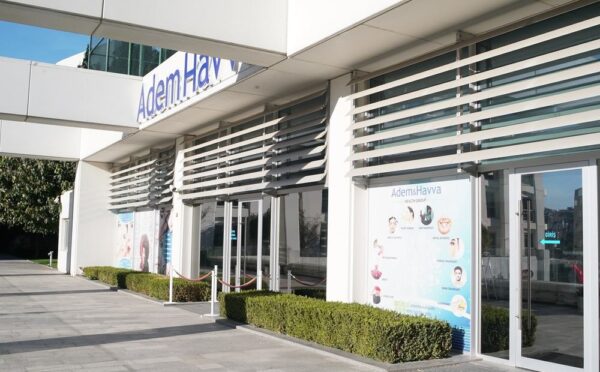
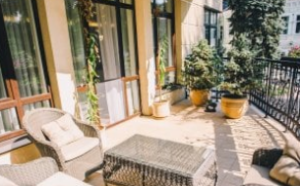
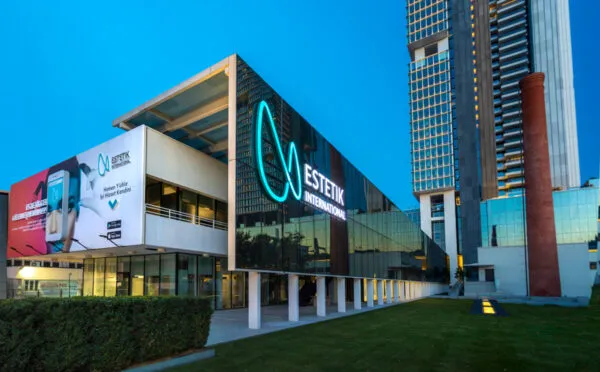
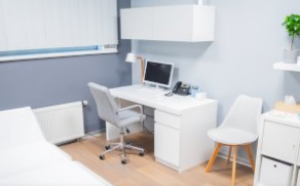
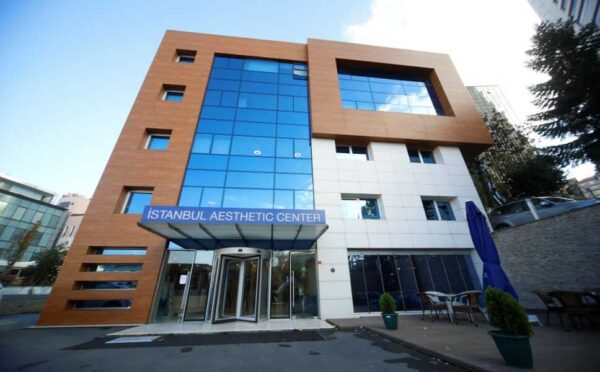
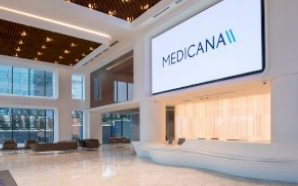
Rhinoplasty Risks
There are mainly three reasons to have rhinoplasty overseas:
Many countries provide medical tourists with nose job prices more affordable than in your home country. For example, rhinoplasty in Turkey is 50% cheaper than in the United States or Britain, which helps to save money even with air tickets. And the price in Mexico is 45% lower than in the USA or Canada, and the distance is so short that you can go there by car.
Top surgeons usually practice where a large flow of medical tourists is. If earlier the top countries for plastic surgery were the United States, Spain, Italy, or Brazil, then due to the pandemic, the focus has shifted to countries where borders are open, and prices are lower — Mexico, Turkey, Ukraine, Costa Rica.
Getting rhinoplasty abroad is an excellent opportunity to travel to visit a new country, get acquainted with its culture, learn more about the inhabitants and traditions, and try contemporary, unusual cuisine.
How to Arrange a Nose Job Journey Abroad?
When you consider obtaining rhinoplasty abroad, you should take such aspects into account:
- First of all, decide what country responds to your preferences: rhinoplasty price, flight time, etc.
- When you already know which country may be the best option for you, the next step is to pick a plastic surgery clinic. Before scheduling nose job surgery at a medical center, check patient reviews and doctor qualifications who is going to manage your rhino operation.
- If you are sure of your clinic’s choice, you can schedule a date for a rhinoplasty procedure overseas. Usually, medical centers ask for some deposit payment — about 10-20% to book a chosen date.
- Then you arrive at the clinic located abroad and get your rhinoplasty and desired makeover.
You can pass all these steps or entrust all arrangement issues to the Bookimed medical tourism platform. Our medical coordinators will select the best clinic and a doctor according to your preferences. We partner only with certified plastic surgery centers exceptionally so that you can be sure of high nose job quality performed abroad.
How to Start Today with Bookimed?
To get nose reshaping with Bookimed, follow these simple steps:
Submit a request on the Bookimed website.
Our medical coordinator will call you as soon as possible, so inform them about your medical problem and what you want to get better.
Learn about rhinoplasty services and prices at various healthcare centers.
Choose a plastic surgeon and a clinic.
Plan your medical journey.
Arrive at the clinic and get your procedure.
Arrive at the clinic and get your procedure.
FAQs
People aged over 18 years old without severe health conditions can have rhinoplasty reshaping. Those patients who suffer from some chronic diseases must consult with a doctor first to decide whether intervention can be performed.
Both operations involve interventions on the nose. Rhinoplasty is carried out for esthetic purposes: to correct the size or shape of the nose. While the purpose of septoplasty is medical — to change the nose’s internal structure and restore breathing.
Rhinoplasty is considered one of the most complex plastic surgery operations. This is due to both soft and bone tissues being involved. Any wrong movement of a plastic surgeon can lead to breathing disorders and visual imbalance.
Typically, a patient can leave a hospital in several hours after a procedure. In some cases, a patient can stay one night in a hospital for follow-up.
Rhinoplasty is surgical intervention. Like any other surgery, nose reshaping is related to such risks as bleeding, infection, anesthesia intolerance, etc.
Typically, health insurance does not cover expenses for rhinoplasty because it is considered a cosmetic procedure. However, patients who will experience septoplasty can count on partial or complete compensation.
The rhinoplasty pricing ranges within $1,500-$20,000. The final bill significantly depends on rhinoplasty complexity, where a patient will have it, who will manage a procedure.
Sure. Before having rhinoplasty, your doctor will create a 3D model of your nose on the computer. So, you will know what to expect after surgery.
A patient is under local or general anesthesia during a procedure. So, an operation is absolutely painless for a patient. When anesthesia is off, a patient can take painkillers to manage pain (if it takes place).
Bruising completely fades in 10-14 days. Then, a patient can return to everyday activities.
While checking doctors’ CVs, pay attention to their education and experience. Find out whether a plastic surgeon visits international conferences and promotes the skills. Always request before and after photos of their patients, carefully read reviews on the independent sources.
Citations
- Wikipedia. (2021). Rhinoplasty. https://en.wikipedia.org/wiki/Rhinoplasty
- American Society of Plastic Surgeons. (2021). Plastic Surgery Statistics Report. https://www.plasticsurgery.org/documents/News/Statistics/2020/plastic-surgery-statistics-full-report-2020.pdf
- International Society of Aesthetic Plastic Surgery. (2019). 2018 Plastic Surgery Statistics Report. https://www.plasticsurgery.org/documents/News/Statistics/2018/plastic-surgery-statistics-full-report-2018.pdf
- Wikipedia. (2021). Saddle nose. https://en.wikipedia.org/wiki/Saddle_nose
- American Society of Plastic Surgeons. Rhinoplasty Procedure Steps. https://www.plasticsurgery.org/cosmetic-procedures/rhinoplasty/procedure
- Healthline. (2020). Nonsurgical Rhinoplasty: What to Expect, Cost, Recovery, and More. https://www.healthline.com/health/nonsurgical-rhinoplasty
- Healthline. (2018). Septoplasty: Procedure, Risks, and Recovery. https://www.healthline.com/health/septoplasty
- RealSelf. (2020). Rhinoplasty: What You Need to Know. https://www.realself.com/surgical/rhinoplasty









